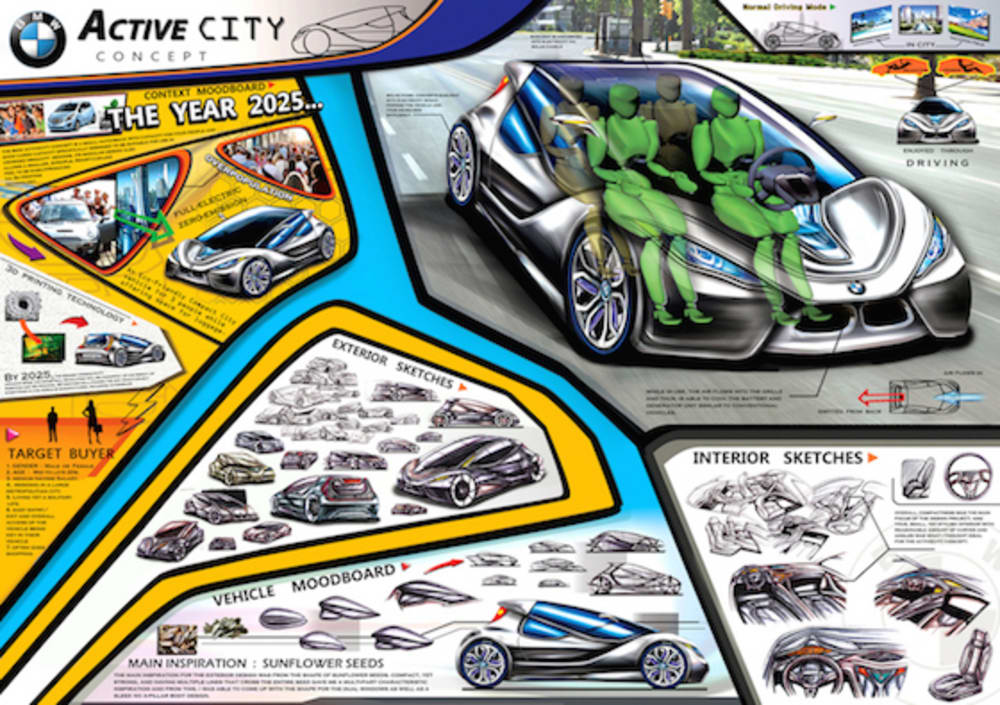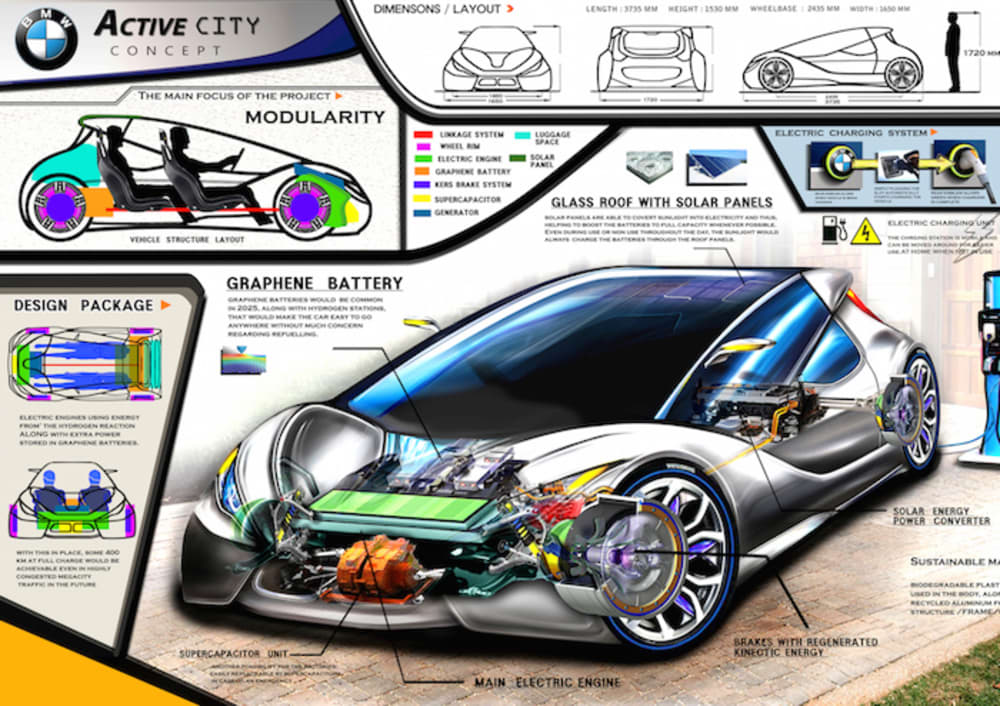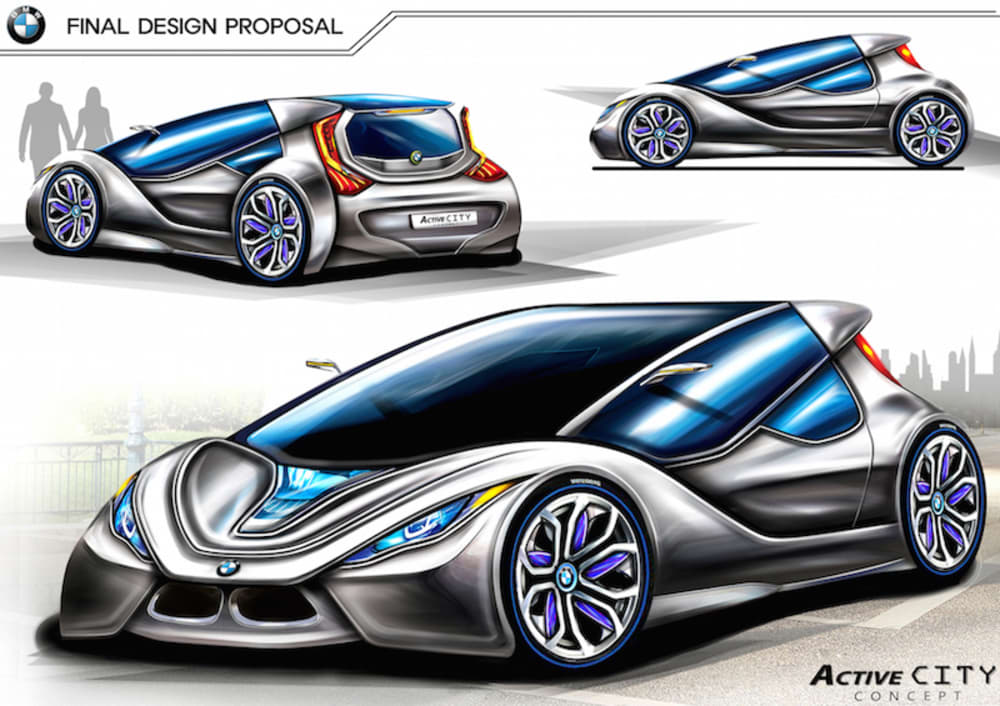INTRODUCTION :
The BMW ActiveCity is a small electric premium vehicle for the year 2025. Having the body shape of a compact 3 door hatchback, this vehicle offers private means of future transportation through crowded cities in an economical, refreshing, and fun way.
CONCEPT DESCRIPTION :
Cars of the next decade will also be 15~20 percent more lighter than the ones at current. While the main body frame is made of low cost carbon fiber for structural rigidity, the car's main shell, doors, and the rims are made of reinforced plastic called thermoplastic polymer. By 2025, plastics will be extensively used on small budget vehicles. Therefore, thanks to the new technology of the mass production of thermoplastic polymer, the BMW ActiveCity is much easier to recycle, but is also a lot less expensive. Adding to that, with graphene durable batteries along with solar panels, ActiveCity offers a range of more than 400 km at full charge while emitting no more than 40g/km CO2.
ASSEMBLY AND VEHICLE CONSTRUCTION MATERIALS :
In order to be rigid and safe, the main body frame of the vehicle is the only part purely made of low cost carbon fiber, which allows a weight saving of more than 50% compared to regular steel. The carbon fiber frame consists of the pillar, doors, underbody unit and chassis.
The rest of the body, such as doors, and panels, are made up of thermoplastic polymer connected within the frame. Even the wheels, which support and transport the entire vehicle with maximum capacity of 5 passengers along with luggage, are constructed with thermoplastic polymer.
Unlike other conventional plastics we have today, thermoplastic polymer has long reinforcing fibers which improve its mechanical properties, providing excellent thermal and chemical stability, dynamic strength, as well as toughness, which makes it an excellent material to be used for the body panels of this vehicle and even wheels. (Main Bumpers, front and rear, side doors, panels, etc.)
This technology is present at current, demonstrated by the 2011 Smart Forvision concept developed by Daimler Benz in conjunction with BASF. Each of the four wheels on the Forvision concept weigh 3 kilograms less than that on a conventional compact vehicle, and thus reducing even more weight and improving efficiency.
And thanks to thermoplastics being able to be melted and reused without any change in material properties, they can be quickly recycled. Thus, cost can be lowered greatly by recycling. In addition, the advance in 3D printing technology will also come into play in developing the body panels for this vehicle. Thus, this enables not only being able to mass produce the vehicle, but also plentiful amounts of spare parts to be used in case of an accident/collision or breakdown and repairs. Even though thermoplastic polymer technology today is expensive and difficult to produce, by the next decade, the level of technology incorporating new materials will surpass twice the level that we are here today in 2015, and thus, will be suitable for mass-production in the near future.
Like this entry?
-
About the Entrant
- Name:Dong Hun Han
- Type of entry:individual
- Software used for this entry:Adobe Photoshop 3
- Patent status:none








